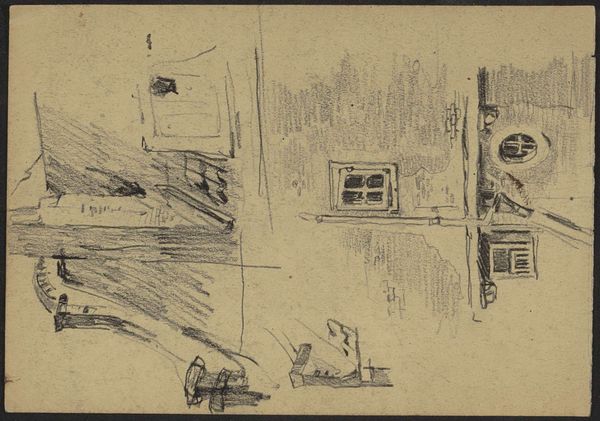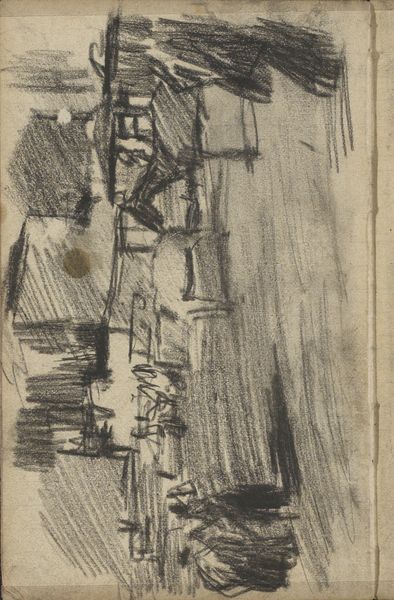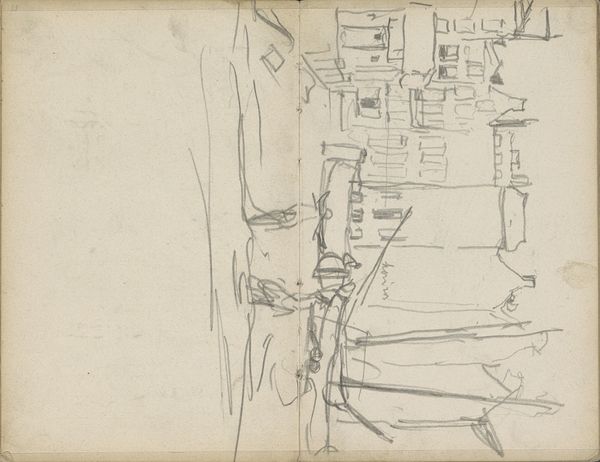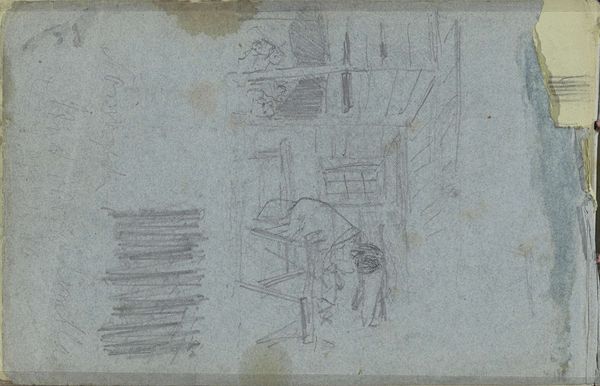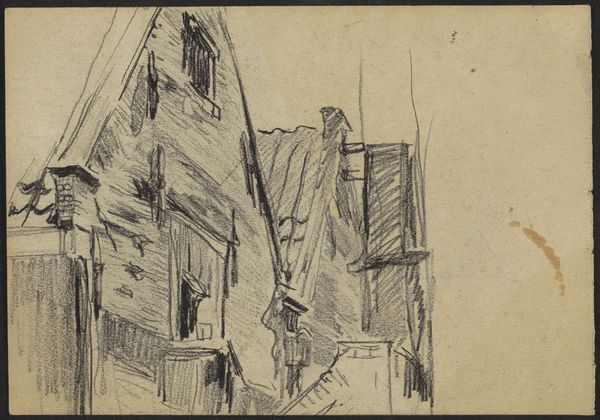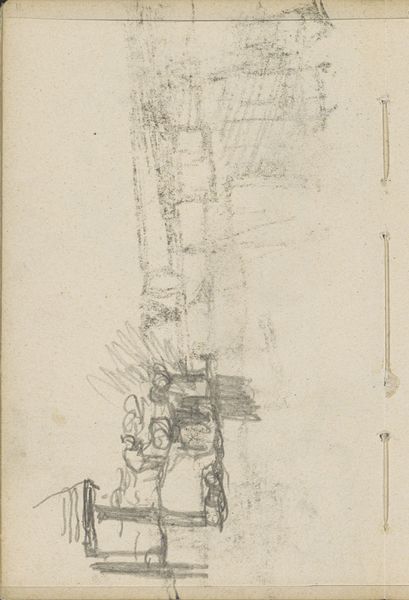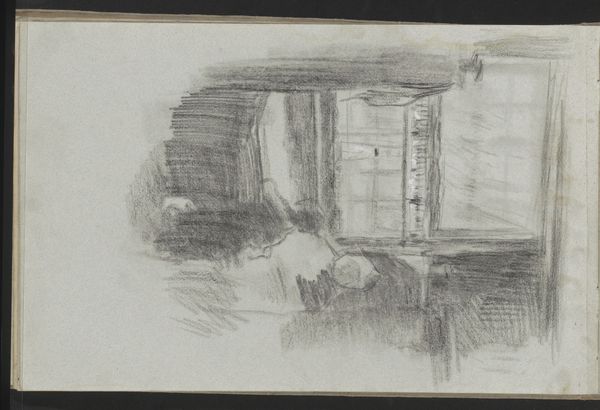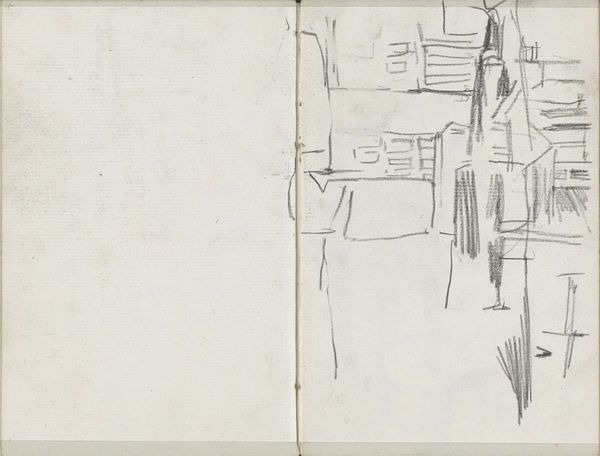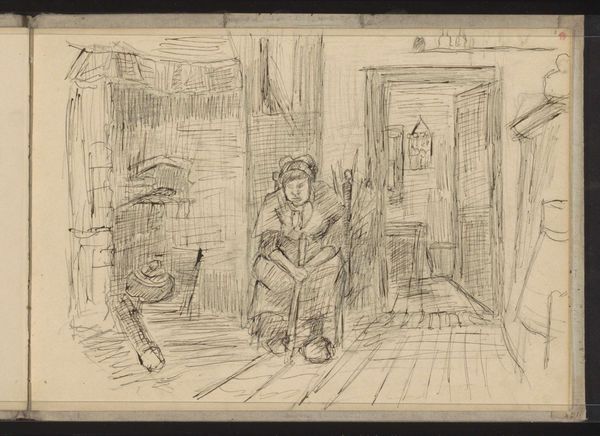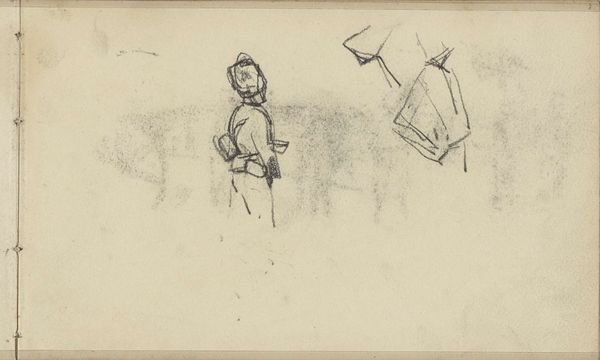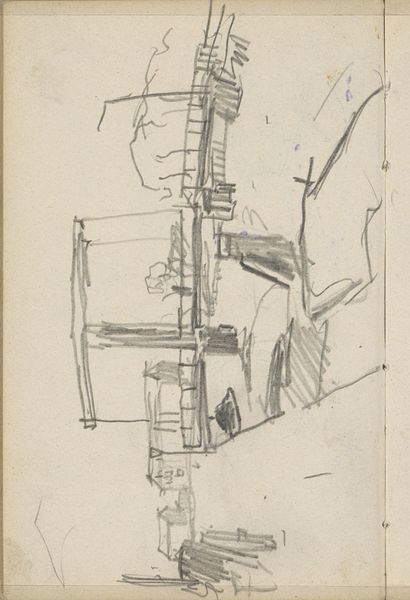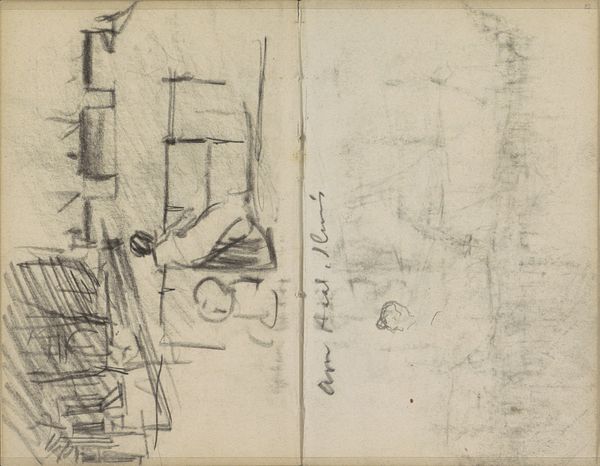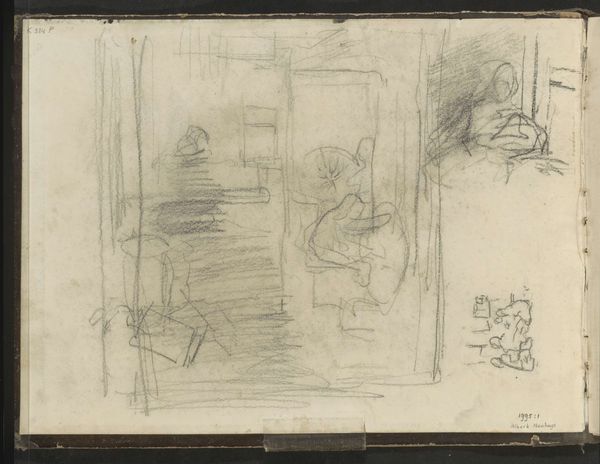
Figuren voor de zijgevel van het pand Korte Dijkstraat 2 in Amsterdam before 1909
0:00
0:00
Dimensions: height 200 mm, width 139 mm
Copyright: Rijks Museum: Open Domain
Curator: Willem Witsen sketched this study, titled "Figuren voor de zijgevel van het pand Korte Dijkstraat 2 in Amsterdam," sometime before 1909. It's currently part of the Rijksmuseum's collection and it's made using pencil and pen on paper. Editor: Ah, my first thought? Fleeting. Like a snatch of a song you can't quite recall. It feels immediate, unfinished... charmingly so. Curator: I think you’re spot on to note its unfinished quality. This sketch offers a glimpse into Witsen’s process and it also opens a window onto daily life in Amsterdam at the turn of the century, but we need to be conscious that this particular window is a bourgeois window. Who do we see represented here? For whom? Editor: Mmm, precisely. I’m also curious about that compressed perspective; the building feels almost stacked, those figures squashed in their relative positioning as though to communicate a kind of urban anxiety... The starkness makes you consider the impact on those experiencing these compressed spaces with fewer resources, right? Curator: Absolutely. It's tempting to view it as just a quick study, but I think that impulse diminishes how the architectural structures reflect power dynamics. And, you know, Witsen’s social circle very much benefited from such structures. His impressions of urban development are very different depending on where you’re standing. Editor: You know, looking closer at the people…they're more suggested than depicted, ghosts in charcoal, their postures bent, perhaps under the weight of something? We need more from these drawings than just the pictorial documentation of buildings. What can it say about people who were there? What kind of record-keeping were the urban poor involved in? Curator: That perspective helps us resist romanticizing the grit and bustle of old Amsterdam. We’re looking through an aestheticized lens with all these impressions, always mediated, yet perhaps offering insight nonetheless. Editor: Maybe that "unfinished" quality isn't a flaw but a feature – inviting us to complete the story ourselves and fill in the blanks in terms of whose voices we want amplified, you know? Curator: It serves as a reminder of the constant negotiation between history, representation, and our own positions in the present. Editor: Right, and on what paper, and with what pen those narratives are rendered!
Comments
No comments
Be the first to comment and join the conversation on the ultimate creative platform.
